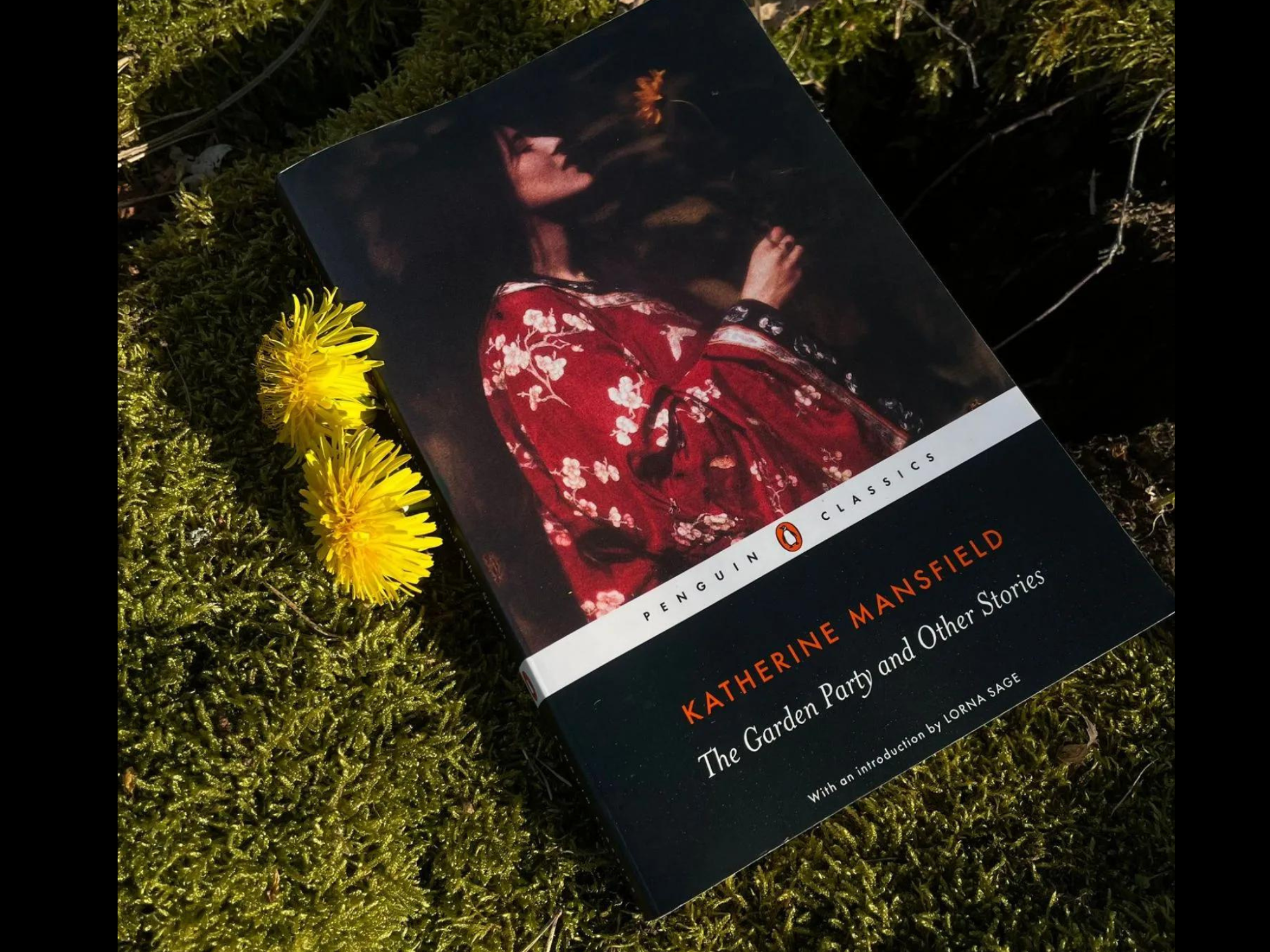Do you like stories that really engage you? Do you like imagining endings for the characters yourself? If so, reading Katherine Mansfield’s short stories can be the perfect choice. Mansfield liberates both characters and readers of her stories because of her ambiguous endings.
There are no definitive conclusions in the stories themselves. We meet the characters in snapshots, just at the moment when they are experiencing deep emotions or have profound insights revealed to them. Take ‘The Garden Party’ (1922), for instance, one of Katherine Mansfield’s most popular works. After reading, we are left with the question of what will happen next to Laura. If we take the time to let the story continue in our minds, we might end up with not one, but several alternative sequels.
As the Literature Cambrige online course is in progress, this is the second post in our mini-series on Katherine Mansfield’s short stories. I write about why they make such a lasting impression on me, while Diana previously wrote about some general characteristics of Mansfield’s writing.
the garden party (1922)
It is a perfect summer day for a garden party. The sky is blue, roses flourish, sandwiches and cream puffs arrive, workers and servants are busy and there will be an orchestra playing. The gardener has been up since dawn and has removed from the lawn the small daisies. Laura, the teenage daughter is as thrilled as everybody else in her wealthy family by the preparations for the lavish party given for their friends. Her mother tells her to take command of the workers in the garden, who just now are setting up a marquee. But Laura respects them as equals thinking that class is unimportant, so why can she not just be friends to them? In fact she likes the workers better than the young men she usually sees. All of a sudden the idyllic scene is changed by the news that a carter from the poor houses downhill has died in an accident. Laura is shocked and wants to cancel the party altogether and turns in vain to her mother for help.
“You are being very absurd, Laura… People like that don’t expect sacrifices from us. And it is not very sympathetic to spoil everybody’s enjoyment as you’re doing now”
Instead of listening to Laura, the mother puts her own large, black hat with gold daisies on Laura’s head, telling her how beautiful she looks. When Laura is admiring herself in the mirror the plea for stopping the party fades away. Laura is at least temporarily led by her family to act accordingly to social expectations of a woman of her class.
The rebellion of Laura seems to vanish, but we as readers are free to think that maybe next time Laura will stand up for her ideas or maybe not? Whatever sequel you go for, the story is very powerful and emblematic of a young person trying to find her own identity.
how katherine mansfield broke free
There is a symbolic meaning of daisies within ‘The Garden Party’, which also became clear to me thanks to Gerry Kimber’s lecture for the Literature Cambridge course. To create the perfect party the gardener removes daisies as weed from the lawn and later Laura wears a hat with artificial golden daisies. When reading Mansfield’s journal from 1907 you are convinced that Katherine Mansfield herself made rebellion attempts and failed many times, but from 1907 she acted very differently. I view this photo of Katherine Mansfield wearing a living daisy on her lapel as a sign of her being able to risk everything, and break free from social constraints and family values.
The autumn of 1907 is very decisive for Mansfield. In October she writes in her journal:
“Damn my family – O Heavens, what bores they are. I detest them heartily. I shall not being here much longer – thank Heaven for this”.
As any teenager the family exhausts her. Already in September she has written that she this time must succeed to persuade her father to let her leave New Zealand for London and to become a writer.
“I am frightened and trying to be brave. This is the greatest and most terrible torture that I have ever thought of enduring, but I can have courage, face him bravely with my head high, and fight – for Life, absolutely … Shall it be Heaven or shall it be Hell. I must win – but first I must face the guns resolutely . It is no good shrinking behind these hedges and great stones, remaining in the shadow. In the full glare I must go to Death or life. Now is the time to prove myself”
Later in the same entry she starts a dialogue with herself to gain more strength.
“You must be a woman now & bear the agony of creating… Good luck my precious one – I love you”
Maybe out of pride over her newly published stories, Mansfield’s father, Harold Beauchamp, did give her the allowance necessary and the permission to leave New Zealand. In a letter he wrote that he thought that she might become a good writer like her cousin Elisabeth von Arnim. Before leaving, her father organised a month long caravan trip to the wilderness. for her. During these adventurous weeks, Mansfield wrote down experiences among maoris and poor white settlers, that contributed to the very stories that led to her success as a Modernist writer in Europe and her life long relation to John Middleton Murray, the editor of the modernist magazine Rhythm, where she was published.
These powerful stories speak in a modern way of positive sides and also the deprivations of the Maori culture and the hard life for the poor European immigrants. So even if Katherine Mansfield left her home country for good in 1908, New Zealand was very much in her mind all her life. To illustrate this I especially recommend ‘How Pearl Button Was Kidnapped’, ‘Ole Underwood‘ and ‘The Woman at the Store’. In the latter we read:
“There is no twilight in our New Zealand days, but a curious half-hour when everything appears grotesque – it frightens – as though the savage spirit of our country walked abroad and sneered at what it saw”.
reading katherine mansfield’s journal
In my early twenties a friend gave me two books. One volume contained excerpts from Mansfield’s diaries and letters, while the other was a collection of short stories. My friend loved ‘The Garden Party’, but I was at the time disappointed with the ending, which I then read as Laura is giving in to her family for good. I was more fascinated by Mansfield’s diaries and letters as I was impressed by her courage to risk everything.
Reading Katherine Mansfield’s journals can be a powerful introduction to her works. In her vivid entries from her early life many especially young people can mirror and perhaps empower themselves even if they cannot achieve the same masterful writing. Even now many years later I found her determination to go beyond fears to achieve the freedom she needed to create so moving.
Katherine Mansfield continued all her life to assert her independence. and stated in her journal on her last birthday October 14th 1922:
Risk! Risk anything! Care no more for the opinions of others, for those voices. Do the hardest thing on earth for you. Act for yourself. Face the truth.
Her short stories stand out among the best ever written and reading her journals and letters makes them even greater. Viewing ‘The Garden Party’, just as a transitory moment with an ambiguous and open ending has enhanced my appreciation of the story permitting me to let go of the somewhat cynical stroke to it. Today I appreciate the ambiguous trait in the short stories, which makes it so rewarding to engage with them, both emotionally and intellectually. They are worth several re-reads, since they are there for you to experience them, interpret them and make them your own.









your thoughts?